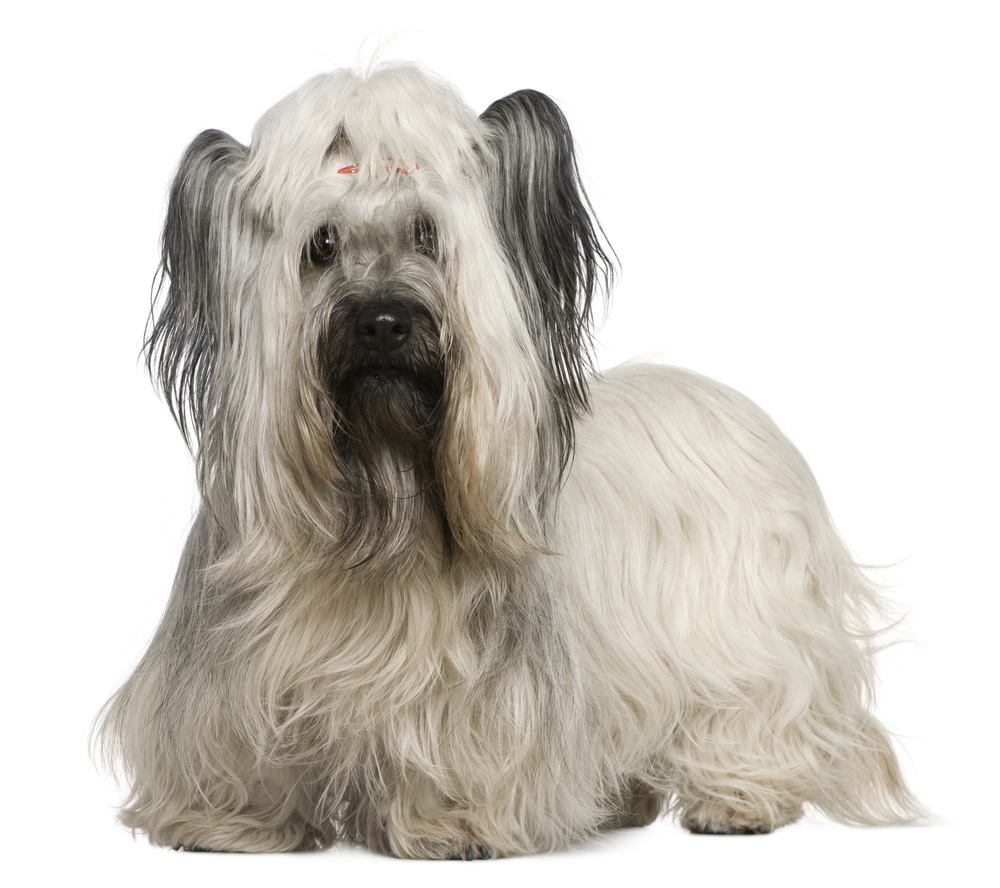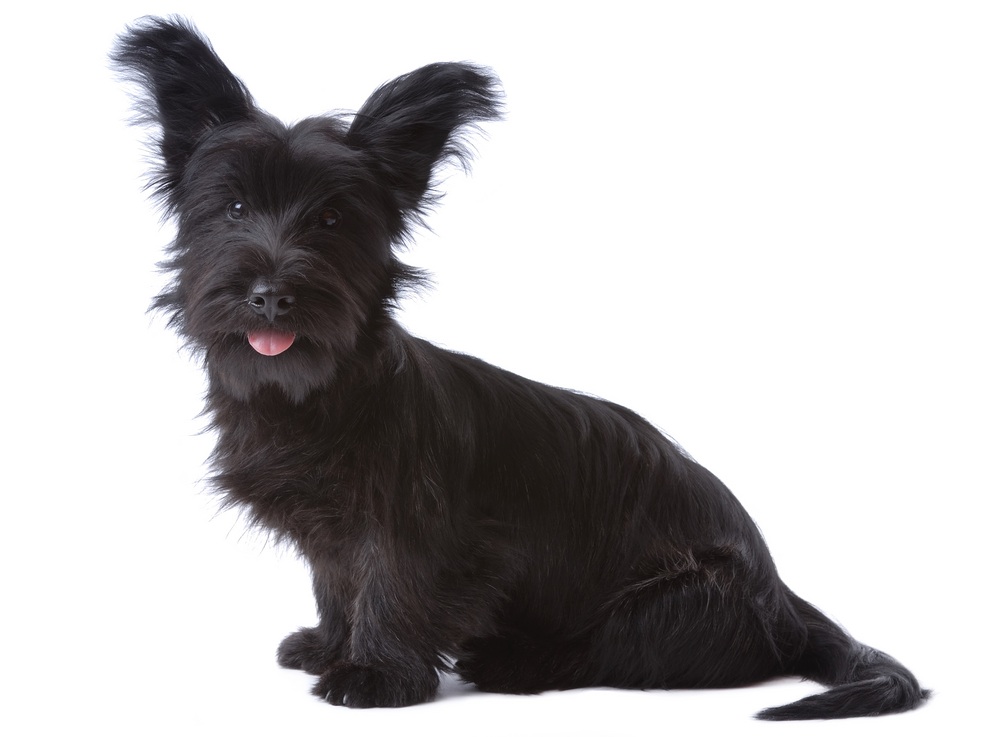Skye terrier

Originating from the Hebridean Isle of Skye, off the western coast of Scotland, this plucky breed of terrier is well-known worldwide, thanks to Greyfriars Bobby, who is commemorated by a statue in an Edinburgh graveyard. It is said that every day for 14 years after his owner’s death, this Skye terrier would follow their regular routine and retrace their steps from home to a local shop where he received a bun. He then went on to the Greyfriars churchyard where his owner was buried.
The Skye terrier is definitely an exceptionally loyal breed, and rather suspicious of strangers. Standing about 25cm (10in) high at the shoulder and weighing about 9kg (20lb), these terriers have been bred in a range of colours, including shades of grey as well as cream, fawn and black. Their nose and ears must always be black.
The undercoat is always a lighter shade than the long, flowing top coat, which will take several years to develop to its full extent. Regular combing and brushing to prevent any knots forming in the hair are essential, although the coat is not naturally inclined to become tangled, nor does it need regular trimming.
The precise ancestry of the Skye terrier is rather mysterious, although the breed’s origins date back at least 400 years. These terriers were originally used to pursue foxes and other creatures such as rats and badgers underground, which helps to explain their low-set, long bodies.
As pets, they will settle in urban surroundings, but they do appreciate an opportunity to explore. When exercising them off the leash, it is important to bear in mind that Skye terriers are not always inclined to agree with other dogs, ever larger ones!Skye terrier puppy

The breed has sadly become very scarce these days. Just 44 Skye terrier puppies were registered in Britain in 2011 by the Kennel Club, making it the second most critically-endangered native UK breed, after the otterhound.
Factbox
Grooming needs: Medium.
Ease of training: Medium.
Health concerns: Avoid over-exercising puppies, as this can result in Skye limp. These terriers can also suffer degenerative intervertebral disc problems affecting the back, so avoid encouraging them to jump.
Best suited to: Single older owners, being very devoted companions.
Did you know?
Some Skye terriers have pricked (raised) ears, whereas others have drop ears.